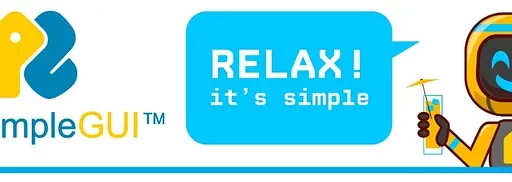GitHub hosts a wealth of resources for Python developers, from algorithm libraries to curated lists of tools. This article explores some of the most popular and widely used Python repositories, highlighting their purpose, popularity, and practical applications. Each repository provides valuable insights into coding best practices, system design, public APIs, and algorithm implementations. Developers looking to enhance their skills or find reliable resources for their projects will find these repositories indispensable.
The Public APIs repository on GitHub is a curated list of free APIs across various domains, maintained by community members and contributors from APILayer. As of January 30, 2025, the repository has garnered over 314,000 stars, reflecting its widespread recognition among developers.
Developers utilize this repository to discover APIs for integration into their projects, facilitating tasks such as data retrieval, service enhancement, and feature expansion.
Example Usage:
To demonstrate how one might use an API from this repository, consider the “Cat Facts” API, which provides random cat-related facts. Below is a Python example using the requests library to fetch and display a cat fact:
import requests
def get_cat_fact():
response = requests.get('https://catfact.ninja/fact')
if response.status_code == 200:
data = response.json()
return data['fact']
else:
return 'Failed to retrieve a cat fact.'
print(get_cat_fact())In this script, a GET request is sent to the Cat Facts API endpoint (https://catfact.ninja/fact). If the request is successful (status code 200), the JSON response is parsed to extract and return the cat fact. Otherwise, an error message is returned.
This example illustrates how developers can leverage APIs listed in the Public APIs repository to enrich their applications with external data.
Associated website is apilayer.com
The System Design Primer is a comprehensive resource aimed at teaching developers how to design large-scale systems and prepare for system design interviews. As of January 30, 2025, the repository has over 288,000 stars on GitHub, indicating its widespread use among the developer community.
Developers use this repository to understand system design principles, study common interview questions, and explore solutions with discussions, code, and diagrams. It includes topics such as scalability, performance, and various architectural patterns.
Example:
To design a URL shortening service like Bit.ly, the repository provides a detailed walkthrough. This includes outlining use cases, defining constraints, creating high-level designs, and diving into core components. For instance, it discusses generating and storing a hash of the full URL, handling hash collisions, and choosing between SQL or NoSQL databases.
This example illustrates how the repository guides developers through the process of designing scalable and efficient systems.
The Awesome Python repository is a curated collection of Python frameworks, libraries, software, and resources. As of January 30, 2025, it has over 232,000 stars on GitHub, indicating its extensive use among developers.
Developers use this repository to discover high-quality Python tools and libraries across various domains, such as web development, data analysis, and machine learning.
Example Usage:
To utilize a library from this list, consider the requests library for making HTTP requests. First, install it using pip:
pip install requestsThen, in your Python script, you can use it as follows:
import requests
response = requests.get('https://api.github.com')
if response.status_code == 200:
data = response.json()
print(data)
else:
print('Request failed with status code:', response.status_code)This script sends a GET request to the GitHub API and prints the returned JSON data if the request is successful. Otherwise, it prints an error message with the status code.
This example demonstrates how to integrate third-party libraries from the Awesome Python list into your projects.
Associated website is: awesome-python.com
The Python repository by TheAlgorithms is a comprehensive collection of algorithms implemented in Python, serving as an educational resource for developers. As of January 30, 2025, it has over 197,000 stars on GitHub, reflecting its widespread recognition.
Developers use this repository to study and understand various algorithms, including sorting, searching, and data structures, enhancing their coding proficiency.
Example Usage:
To implement the bubble sort algorithm from this repository, you can use the following Python code:
def bubble_sort(arr):
n = len(arr)
for i in range(n):
for j in range(0, n - i - 1):
if arr[j] > arr[j + 1]:
arr[j], arr[j + 1] = arr[j + 1], arr[j]
return arr
# Example usage:
arr = [64, 34, 25, 12, 22, 11, 90]
sorted_arr = bubble_sort(arr)
print("Sorted array is:", sorted_arr)This function iterates through the list, repeatedly swapping adjacent elements if they are in the wrong order, resulting in a sorted array.
This example demonstrates how developers can learn and apply algorithm implementations from the repository in their projects.
Associated website: thealgorithms.github.io/Python/
The AutoGPT repository is an open-source platform that enables users to create, deploy, and manage continuous AI agents for automating complex workflows. As of January 30, 2025, it has garnered over 171,000 stars on GitHub, reflecting its significant impact in the AI community.
Developers utilize this platform to build AI agents capable of automating tasks such as data analysis, content generation, and process optimization. The repository offers tools for agent creation, workflow management, and deployment controls.
Example Usage:
To set up AutoGPT for self-hosting, follow these steps:
Clone the Repository:
git clone https://github.com/Significant-Gravitas/AutoGPT.git
cd AutoGPTInstall Dependencies:
- Ensure you have Docker, VSCode, Git, and npm installed. Then, proceed with the setup as outlined in the repository’s documentation.
Configure the Environment:
- Rename
.env.templateto.envand fill in yourOPENAI_API_KEY. If you plan to use Speech Mode, provide yourELEVEN_LABS_API_KEYas well.
Run the Application:
python scripts/main.pyThis setup allows you to interact with AutoGPT’s AI agents through its user-friendly interface, enabling the automation of various tasks.
This example demonstrates how developers can leverage AutoGPT to streamline processes and enhance productivity through AI-driven automation.
Associated website: agpt.co
Data sources from ⭐Github Ranking⭐ Github stars and forks ranking list. Github Top100 stars list of different languages. Updates daily.
Thank you for reading this article. I hope you found it helpful and informative. If you have any questions, or if you would like to suggest new Python code examples or topics for future tutorials, please feel free to reach out. Your feedback and suggestions are always welcome!
Happy coding!
Py-Core.com Python Programming
You can also find this article at Medium.com


